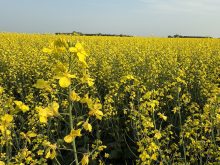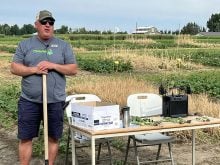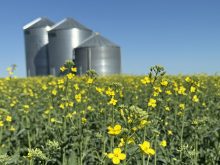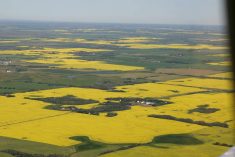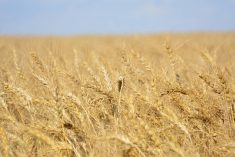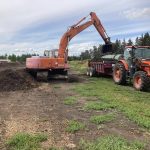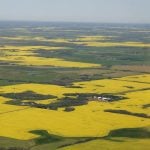Spring flooding was a recurring topic of conversation last week at a meeting of Saskatchewan’s rural municipalities.
Soil is already saturated across most of the province, sloughs and potholes are filled to capacity and a heavier than normal snow cover lies across the entire grain belt this winter.
As a result, municipal officials are bracing for a costly spring, fraught with flooding, road repairs and infrastructure upgrades.
David Marit, president of the Saskatchewan Association of Rural Municipalities, said it is still impossible to tell how bad the flooding situation will be, but municipalities are preparing for the worst.
Read Also

Canola council cuts field agronomy team
The Canola Council of Canada is cutting its agronomy team as part of a “refreshed strategic framework.”
“It’s a huge concern,” Marit said when asked how bad flooding could be this spring.
“A lot will depend on how this snow goes, but everyone’s talking about it and everyone’s concerned about it and rightfully so.”
During a portion of SARM’s annual convention held last week in Saskatoon, convention delegates asked Saskatchewan environment minister Dustin Duncan about funding for municipal flood control efforts, emergency preparedness and the security of municipal drinking water supplies.
The province has already announced a $22 million Emergency Flood Damage Reduction Program aimed at preventing flooding and reducing damage to communities, rural municipalities, farms and country residences.
The program will provide technical and financial support to protect homes and permanent structures. It will also provide funding to test and analyze potable ground water supplies.
“We’re bracing for a very wet spring,” said Duncan.
“We know that we’re sitting on about 200 percent of our normal snow pack … and we’re trying as best as we can as a provincial government in helping rural municipalities and urban municipalities to prepare for flooding.”
Duncan said the province would assess the need for additional funding as the situation evolves.
“The (Saskatchewan) Watershed Authority believes that ($22 million) is going to be adequate but certainly … if we go beyond that, we’ll have to take a look at additional money,” Duncan said.
Arlynn Kurtz, a director with the Agricultural Producers Association of Saskatchewan and a municipal councillor from the RM of Fertile Belt near Stockholm, Sask., said RMs appreciate the fact that the province’s $22 flood program will cover the costs of engineering projects related to flood control.
However, he reminded provincial cabinet members that engineering firms will be in high demand this spring and some flood-related problems will require immediate attention.
“There are going to be situations that arise this year where there is no time for an engineer or to wait,” said Kurtz.
“We need some very clear guidelines as to how we can proceed (with short-term flood mitigation projects) so that we don’t become ineligible for assistance in (emergency) work that has to take place.”
Duncan said the province recognizes the need for flexibility.
Marit said 65 to 75 percent of the province’s 297 rural municipalities will be affected by flooding this spring.
Personal uninsurable losses related to flooded farmland could be huge, he added.
The province has already made changes to the provincial crop insurance program to deal with flood related losses. Among those changes is a $20 increase in unseeded acreage claims to $70 an acre.
Saskatchewan agriculture minister Bob Bjornerud said the government will be watching the situation closely.
“I think what I’ve told some of our producers is that we’ll be there for them again this year and we’ll see what Mother Nature deals us going further into May and June.”





